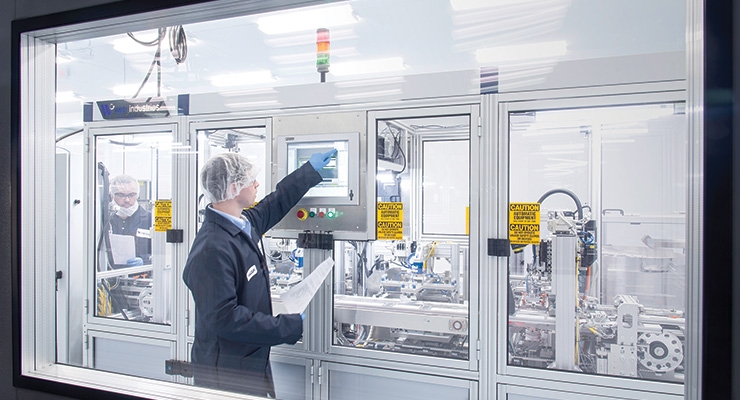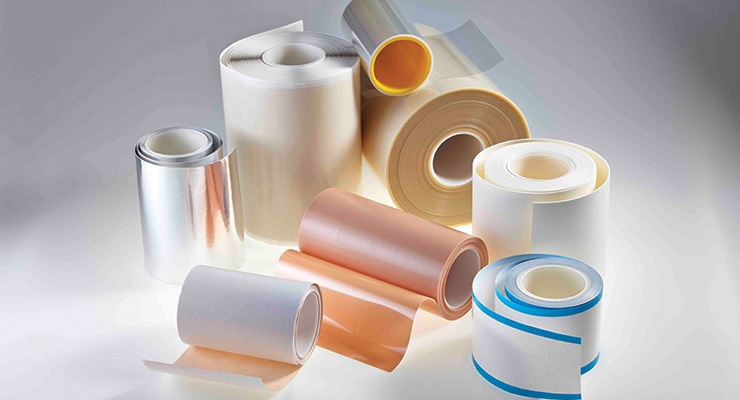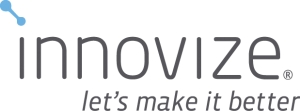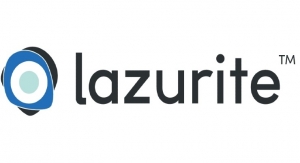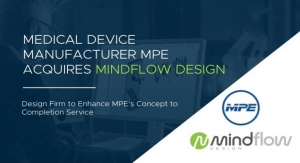Mark Crawford, Contributing Writer03.15.18
As medical device manufacturers (MDMs) continue to make smaller and more complex devices, using advanced technologies and materials, all segments of the supply chain must keep up—including converting, printing, and labeling. Converting is no longer the simple slitting and sheeting business it once was. Many converters today bring much more to the table, including integrated slitting, printing, laminating, and die-cutting processes, as well as top-notch design, research, and prototyping capabilities. Other assets are state-of-the-art optical registration, advanced in-line inspection systems, and cleanroom and humidity-controlled environments for highly sensitive products, assembly operations, or clinical trials.
Vertically integrated converters are in high demand by MDMs. When MDMs partner with vertically integrated converters, they shorten the supply chain, speed up production, reduce variance, and improve communication and decision making. Converters that are deeply experienced with unique materials and design and manufacturing processes become crucial partners for solving complicated manufacturing challenges. They often provide engineering services to their MDM customers, ranging from feasibility trials through validation; they can also determine the best material properties and high-volume machinery needs to improve device design and production.
Further, as regulations become more stringent, converting, printing, and labeling play key roles in the submission process and getting products to market more quickly. Increasingly, MDMs and their converters work closely together to create more effective product and package labeling to enhance functionality, reduce compliance risks, and speed up the approval process.
“Many converters today are multifaceted, with advanced technologies including automation, and offer specialized die-cutting and rotary equipment, rapid prototyping, and cleanroom services,” said Deepak Prakash, senior director of global marketing for Vancive Medical Technologies, a Chicago-based business unit of Avery Dennison that provides skin friendly adhesive products for wearables, wound care, diagnostic, ostomy, surgical, and patient monitoring applications.
“Medical device manufacturers are partnering with contract partners with unique in-house capabilities for turn-key solutions,” added Beth Schivley, marketing communications manager for Scapa Healthcare, a Windsor, Conn.-based provider of skin-friendly adhesive solutions and services for the healthcare industry, with a focus on advanced wound care, consumer wellness, and wearable medical products. “These solutions include integrated and customized conversion, state-of-the-art printing, and finished packaging solutions.”
Conversion Capabilities Continue to Expand
OEMs are always seeking talented, vertically integrated converters that can provide multiple services and shorten the supply chain. To be competitive, converters must understand the latest medical materials and provide expert or custom conversion processes, such as lamination, high-speed die cutting, laser cutting, slitting/rewinding, kiss cutting, heat sealing, embossing, coatings, perforating, and packaging. They must also be able to develop prototypes and perform complex finishing techniques, often in cleanroom environments. And, as they design and manufacture more wearable medical devices, MDMs seek converters that are experts in lamination and can incorporate flexible circuitry and electronics into roll goods.
“Projects have a greater level of complexity today, from material selection through production, and are no longer as simple as a Band-Aid,” said Linnea Morrison, marketing associate for Boyd Technologies, a Lee, Mass.-based provider of material sourcing, product development, and advanced manufacturing of medical devices. “There is ample opportunity for converters that are skilled with advanced materials, especially with the trend toward single-use disposables and wearables.”
As medical devices get smaller and more complex, often with unique geometries, their components require high-precision rotary die-cutting with repeatability, tight tolerances, or complex multi-layer laminations. Precision automated laser systems perform cutting, seaming, perforating, etching, welding, and engraving, including ultrasonic welding for antimicrobial packaging. Slitting technologies can reduce larger master rolls down to 0.125 inches with tolerances of ±0.025 inches, depending on the material and application.
Common conversion projects include diagnostic test strips, lateral flow test strips, composite wound care dressings, medical foam tape, woven and nonwoven biocompatible pressure-sensitive adhesive tapes, steri-drapes and ostomy components, diagnostic disposables, multi-layer island dressings, antimicrobial dressings, and hydrocolloid and hydrogel dressings.
Converters pride themselves on their custom and precision die-cutting capabilities for processing polymers, tapes, films, foils, abrasives, custom laminates, and overlay materials into finished parts or labels. Advanced, high-speed die-cutting machines are equipped with digital controls, precision tooling, and state-of-the-art vision systems to maximize tight tolerances and repeatability. Die cutting can be achieved through rotary dies, steel rule dies, and matched metal tooling.
“Technical improvements now make it possible to manufacture rotary dies more quickly, and at less cost,” said Morrison. “These new refinements have improved the capabilities and lifetime of the die, as well as overall tool longevity. 3D printing will soon be able to print dies and other tooling for immediate use on the manufacturing floor. When used in conjunction with coordinate measuring machines for importing parts into CAD documents, this will open up more possibilities in prototyping and manufacturing.”
Printing and Labeling
In the past, medical device companies did not regard labels as particularly critical components of the production process. Labels tended to be the last thing engineers and designers considered during development. That, however, has changed—labeling matters.
For MDMs, the definition of what constitutes a “label” can be very broad, including instructions for use (IFUs), technical data sheets, and other documents. Requirements for international product delivery can also be quite challenging—for example, more than 10 unique medical device codification systems exist in the European Union (EU) alone.
Kallik, a Tamworth, U.K.-based provider of labeling and artwork management solutions for regulated markets such as medical devices and pharmaceuticals, noted that the many product identification standards currently in use—including Global Standards One (GS1), Health Industry Business Communications Council (HIBCC), European Article Number (EAN), and Universal Product Code (UPC)—are “at odds with the drive to harmonize processes along the supply chain, which for medical device manufacturers can include contract manufacturers, private label and re-label partners, distribution points, and healthcare providers.”
A large number of niche markets exist for medical device labeling. Each type of medical device requires its own specific type of label; therefore, customized label development is often required. For example, when a converter develops a new adhesive for one label application, it usually must also develop a specific face stock (such as paper or film) for that label and qualify to get the appropriate certifications.
“OEMs are much more demanding regarding labeling qualifications and change management control,” said Benoît Jourde, senior business development manager for intelligent labels and healthcare-Europe, for Avery Dennison in Champ-sur-Drac, France, which provides labeling solutions for the medical device industry. “The requirements they have now for labels are the same as those they have for all the other materials and components of the medical device. OEMs are becoming more careful about migration, especially if the device is made of a plastic material.”
With blood bags, for example, special certifications are required to prove the label meets toxicity safety standards and does not present risks for adhesive and printing ink migration. For other medical devices such as auto-injectors, Jourde noted, the challenge is more the need to apply the label to a device with a very small diameter. “Each time you approach a labeling application,” he said, “you must be prepared to develop a unique, customized solution.”
Advancements in design and manufacturing technologies allow engineers to create highly accurate, multifunctional, point-of-care devices that make real-time data become the center point of lifestyle and healthcare decisions. This rapidly expanding market is “driving a requirement for stricter labeling and tracking, including unique device identification [UDI] and radio frequency identification [RFID],” said Blake Phillips, marketing specialist for Web Industries, a Holliston, Mass.-based provider of precision converting and outsourced manufacturing services.
The FDA’s UDI system is being phased in over several years; Sept. 24, 2018, is the deadline that requires UDI for most co-packaged and cross-labeled combination products with a device constituent. It is also the compliance date for labeling and Global Unique Device Identification Database (GUDID) submissions for Class I/unclassified devices.
The compliance date for Class I devices will impact tens and possibly hundreds of thousands of devices per manufacturer. “A similar approach is being adopted across the EU with the new Medical Device Regulations (MDR) requiring manufacturers to assign a unique device identification to increase levels of patient safety and address the need for traceability,” reported Kallik. “Device manufacturers have until late 2019 or early 2020 to demonstrate compliance across their product portfolios.”
An increasing amount of documentation is being required by MDMs to verify conformance of the product specifications. Labeling is essential for ensuring traceability of medical devices and their components and materials. For example, Innovize, a St. Paul, Minn.-based contract converting and manufacturing firm, provides strict lot controls and raw materials/components tracking.
“Our product label printing—including thermal film transfer, flexographic and ink-jet printing text, and barcoded variable data—enables labeling options such as Global Trade Item Number (GTIN) identifier, lot control, serialization, manufacturing build dates, expiration dating, and calibration coding,” said Dave Jessen, vice president of sales and marketing for Innovize.
When dealing with the challenges of global reach, complexity of language, local market variations, and the volume of product labels managed, MDMs and their converters are using more computer-based tools to manage labels and printing in such diverse and dynamic environments. Software programs can provide “central control and a clear line of sight across all packaging and labeling activities, enabling artwork and content to be changed reliably, efficiently, and definitively at the source,” according to Kallik, which offers a cloud-based program that organizes and presents this complex labeling data throughout the supply chain. “This also leads to more accurate and timely compliance reporting. The increased efficiency and reduced compliance risks achieved by taking this approach help deliver competitive advantage within existing territories and when entering new growth markets.”
Technology Advances
3D printing and other additive manufacturing processes can now be used to rapidly prototype parts and create production tools on site, such as jigs and tooling, which make iterative design processes more efficient. Advances in microfluidics and the ability to use channels allow the development of innovative devices that combine multiple technologies, such as lateral flow strips with microfluidic components. Another fast-growing technology is wearable devices, which integrate sensor technology and electronics to capture, transmit, and analyze personal health data in real time. These products may include multi-laminate materials, flexible circuitry, and electronics, which often require more innovative solutions from converters.
“With this level of complexity, OEMs need converters that can be partners in development, and can act as another arm of the OEM,” said Prakash. “They want converters that are cost effective and offer piloting capabilities, as well as small-volume manufacturing. In the early stages of development, the OEM needs flexibility. They need a converter that can make 10,000 parts, 50,000 parts, etc. At the end of the day, OEMs are looking for expertise, the ability to handle complicated designs, and the ability to do it all in a fast, flexible, and expeditious manner.”
Because of design complexities, converters must often meet highly stringent material requirements. In some cases, they are specifying new advanced materials along with other substances that have been on the market for a long time—creating the challenge of being able to ensure the materials are compatible and meet the OEM’s device requirements.
“Often these requirements can be conflicting,” said Prakash. “For example, an OEM may want a wearable device to stay on the patient for an extended time period and to come off extremely easily and painlessly. They’re looking for materials to meet both requirements. OEMs, converters, and materials suppliers must all work together to identify materials that are fit for the purpose. It can be a challenge to make different combinations of materials work well together.”
There are also challenges with developing adhesives that work effectively with some of the newer plastics and polymer materials being used in medical devices. “There is a need for labeling that can withstand more difficult supply chain and storage conditions, such as cold and extremely cold environments of -40 degrees C, -60 C, or even -80 C,” said Jourde. “We have more requests for specialized adhesives to help labels adhere in these conditions.”
Complex products, advanced technologies, and greater regulatory oversight require converters to implement and maintain robust quality systems. Designing a quality system for the converting industry is significantly different than for a manufacturer of discrete parts. The concept of buying rolled goods, having variable setup and scrap materials, and ensuring that only good parts are shipped takes a different mindset in the design of quality inspection plans and processes. In addition, the estimating and change control business processes needed to manage rolled goods and build in high volume provide a level of complexity not seen in typical medical device manufacturing.
To meet these challenges, Innovize integrated a large portion of its quality system business processes into a flexible enterprise resource planning (ERP) tool to ensure consistent controls. The company is also in the process of designing an integrated labeling tool tied into the ERP system to ensure consistency in implementing the new FDA and EU UDI requirements for its medical device customers.
“The design of a contract manufacturer’s quality system is one of the most important differentiators to customers,” said Jessen. “The FDA and ISO organizations have been stressing supplier quality over the past few years, including supplier audits. We hosted 17 customer audits in 2017. Customers perform audits on an annual, bi-annual, or less-frequent basis, according to their quality systems and how critical a component we make for them.”
Material Challenges
With the ever-advancing wearables market, MDMs are designing wearable devices with very complex construction and specifications, especially for material performance. These devices often need to be flexible and breathable, with no sharp edges and a discreet profile. Often multiple layers are involved—tie layers, waterproof materials, conductive materials, circuitry, etc. “They may need to make a one-piece disposable product or a reusable two-piece design,” said Prakash. “We help them navigate their material options so that they can develop a product that is cost effective and can be manufactured on a mass scale.”
Recently, Avery Dennison worked with an OEM that needed labels for products it was making from new cyclic olefin polymer (COP) or cyclic olefin copolymer (COC) materials. These substrates have very low surface energy, which makes it difficult for labels to stick to these next-generation polymers. “We helped them develop a labeling solution for devices made of these materials that is based on the new proprietary adhesive S717P, which is an emulsion acrylic,” said Jourde.
“OEMs often believe that they have an understanding of the raw material supplier networks in which they work,” said Morrison. “When they are unable to identify a suitable material, they tend to believe it does not exist.”
At that point, they tend to approach Boyd Technologies to find a way to meet their material specifications. If Boyd engineers don’t know the answer, they consult Sourcebook (www.sourcebookmaterials.com), an industry-leading tool that optimizes the identification of raw materials, decreasing the time it takes to design a new product.
“Sourcebook gives us access to a global network of suppliers that includes both leading suppliers and lesser-known niche manufacturers,” said Morrison. “Sourcebook can find materials that R&D teams from industry-leading OEMs are unable to source. With the Sourcebook database, our material experts can provide them with several options that will allow the product development process to move forward.”
A Sustainable Future
Increasingly, MDMs are focusing on programs that target supply chain and facility sustainability. This can range from the recycling of process aids and shipping materials to choosing renewable sources of energy to power their facilities. Environmental sustainability is something that can be embraced on all levels, especially by making processes more efficient and reducing the manufacturing footprint. Sustainability also includes making the commitment to manufacture products that are easily recycled.
As a result, MDMs and their converters and printers seek to implement responsible manufacturing processes and materials to minimize their impacts on the environment. “We want to use green materials whenever possible,” said Prakash. “For example, Vancive Medical Technologies has developed a barrier film that is polyvinyl chloride-free.”
In another example, Avery Dennison hopes to achieve eight sustainability goals by 2025. The corporation is taking steps to make operations 95 percent landfill-free by 2025, with 75 percent of waste repurposed into new products or energy.
Being environmentally responsible is also important for the MDM brand and developing compatible supply chain partnerships. “As OEMs move toward sustainability, you don’t want to be the converter that specifies materials that go against that goal,” said Prakash. “It just makes sense to work with materials that are safe, biocompatible, and eco-friendly as the industry starts to shift toward a culture of sustainability.”
Mark Crawford is a full-time freelance business and marketing/communications writer based in Madison, Wis. His clients range from startups to global manufacturing leaders. He also writes a variety of feature articles for regional and national publications and is the author of five books.
Vertically integrated converters are in high demand by MDMs. When MDMs partner with vertically integrated converters, they shorten the supply chain, speed up production, reduce variance, and improve communication and decision making. Converters that are deeply experienced with unique materials and design and manufacturing processes become crucial partners for solving complicated manufacturing challenges. They often provide engineering services to their MDM customers, ranging from feasibility trials through validation; they can also determine the best material properties and high-volume machinery needs to improve device design and production.
Further, as regulations become more stringent, converting, printing, and labeling play key roles in the submission process and getting products to market more quickly. Increasingly, MDMs and their converters work closely together to create more effective product and package labeling to enhance functionality, reduce compliance risks, and speed up the approval process.
“Many converters today are multifaceted, with advanced technologies including automation, and offer specialized die-cutting and rotary equipment, rapid prototyping, and cleanroom services,” said Deepak Prakash, senior director of global marketing for Vancive Medical Technologies, a Chicago-based business unit of Avery Dennison that provides skin friendly adhesive products for wearables, wound care, diagnostic, ostomy, surgical, and patient monitoring applications.
“Medical device manufacturers are partnering with contract partners with unique in-house capabilities for turn-key solutions,” added Beth Schivley, marketing communications manager for Scapa Healthcare, a Windsor, Conn.-based provider of skin-friendly adhesive solutions and services for the healthcare industry, with a focus on advanced wound care, consumer wellness, and wearable medical products. “These solutions include integrated and customized conversion, state-of-the-art printing, and finished packaging solutions.”
Conversion Capabilities Continue to Expand
OEMs are always seeking talented, vertically integrated converters that can provide multiple services and shorten the supply chain. To be competitive, converters must understand the latest medical materials and provide expert or custom conversion processes, such as lamination, high-speed die cutting, laser cutting, slitting/rewinding, kiss cutting, heat sealing, embossing, coatings, perforating, and packaging. They must also be able to develop prototypes and perform complex finishing techniques, often in cleanroom environments. And, as they design and manufacture more wearable medical devices, MDMs seek converters that are experts in lamination and can incorporate flexible circuitry and electronics into roll goods.
“Projects have a greater level of complexity today, from material selection through production, and are no longer as simple as a Band-Aid,” said Linnea Morrison, marketing associate for Boyd Technologies, a Lee, Mass.-based provider of material sourcing, product development, and advanced manufacturing of medical devices. “There is ample opportunity for converters that are skilled with advanced materials, especially with the trend toward single-use disposables and wearables.”
As medical devices get smaller and more complex, often with unique geometries, their components require high-precision rotary die-cutting with repeatability, tight tolerances, or complex multi-layer laminations. Precision automated laser systems perform cutting, seaming, perforating, etching, welding, and engraving, including ultrasonic welding for antimicrobial packaging. Slitting technologies can reduce larger master rolls down to 0.125 inches with tolerances of ±0.025 inches, depending on the material and application.
Common conversion projects include diagnostic test strips, lateral flow test strips, composite wound care dressings, medical foam tape, woven and nonwoven biocompatible pressure-sensitive adhesive tapes, steri-drapes and ostomy components, diagnostic disposables, multi-layer island dressings, antimicrobial dressings, and hydrocolloid and hydrogel dressings.
Converters pride themselves on their custom and precision die-cutting capabilities for processing polymers, tapes, films, foils, abrasives, custom laminates, and overlay materials into finished parts or labels. Advanced, high-speed die-cutting machines are equipped with digital controls, precision tooling, and state-of-the-art vision systems to maximize tight tolerances and repeatability. Die cutting can be achieved through rotary dies, steel rule dies, and matched metal tooling.
“Technical improvements now make it possible to manufacture rotary dies more quickly, and at less cost,” said Morrison. “These new refinements have improved the capabilities and lifetime of the die, as well as overall tool longevity. 3D printing will soon be able to print dies and other tooling for immediate use on the manufacturing floor. When used in conjunction with coordinate measuring machines for importing parts into CAD documents, this will open up more possibilities in prototyping and manufacturing.”
Printing and Labeling
In the past, medical device companies did not regard labels as particularly critical components of the production process. Labels tended to be the last thing engineers and designers considered during development. That, however, has changed—labeling matters.
For MDMs, the definition of what constitutes a “label” can be very broad, including instructions for use (IFUs), technical data sheets, and other documents. Requirements for international product delivery can also be quite challenging—for example, more than 10 unique medical device codification systems exist in the European Union (EU) alone.
Kallik, a Tamworth, U.K.-based provider of labeling and artwork management solutions for regulated markets such as medical devices and pharmaceuticals, noted that the many product identification standards currently in use—including Global Standards One (GS1), Health Industry Business Communications Council (HIBCC), European Article Number (EAN), and Universal Product Code (UPC)—are “at odds with the drive to harmonize processes along the supply chain, which for medical device manufacturers can include contract manufacturers, private label and re-label partners, distribution points, and healthcare providers.”
A large number of niche markets exist for medical device labeling. Each type of medical device requires its own specific type of label; therefore, customized label development is often required. For example, when a converter develops a new adhesive for one label application, it usually must also develop a specific face stock (such as paper or film) for that label and qualify to get the appropriate certifications.
“OEMs are much more demanding regarding labeling qualifications and change management control,” said Benoît Jourde, senior business development manager for intelligent labels and healthcare-Europe, for Avery Dennison in Champ-sur-Drac, France, which provides labeling solutions for the medical device industry. “The requirements they have now for labels are the same as those they have for all the other materials and components of the medical device. OEMs are becoming more careful about migration, especially if the device is made of a plastic material.”
With blood bags, for example, special certifications are required to prove the label meets toxicity safety standards and does not present risks for adhesive and printing ink migration. For other medical devices such as auto-injectors, Jourde noted, the challenge is more the need to apply the label to a device with a very small diameter. “Each time you approach a labeling application,” he said, “you must be prepared to develop a unique, customized solution.”
Advancements in design and manufacturing technologies allow engineers to create highly accurate, multifunctional, point-of-care devices that make real-time data become the center point of lifestyle and healthcare decisions. This rapidly expanding market is “driving a requirement for stricter labeling and tracking, including unique device identification [UDI] and radio frequency identification [RFID],” said Blake Phillips, marketing specialist for Web Industries, a Holliston, Mass.-based provider of precision converting and outsourced manufacturing services.
The FDA’s UDI system is being phased in over several years; Sept. 24, 2018, is the deadline that requires UDI for most co-packaged and cross-labeled combination products with a device constituent. It is also the compliance date for labeling and Global Unique Device Identification Database (GUDID) submissions for Class I/unclassified devices.
The compliance date for Class I devices will impact tens and possibly hundreds of thousands of devices per manufacturer. “A similar approach is being adopted across the EU with the new Medical Device Regulations (MDR) requiring manufacturers to assign a unique device identification to increase levels of patient safety and address the need for traceability,” reported Kallik. “Device manufacturers have until late 2019 or early 2020 to demonstrate compliance across their product portfolios.”
An increasing amount of documentation is being required by MDMs to verify conformance of the product specifications. Labeling is essential for ensuring traceability of medical devices and their components and materials. For example, Innovize, a St. Paul, Minn.-based contract converting and manufacturing firm, provides strict lot controls and raw materials/components tracking.
“Our product label printing—including thermal film transfer, flexographic and ink-jet printing text, and barcoded variable data—enables labeling options such as Global Trade Item Number (GTIN) identifier, lot control, serialization, manufacturing build dates, expiration dating, and calibration coding,” said Dave Jessen, vice president of sales and marketing for Innovize.
When dealing with the challenges of global reach, complexity of language, local market variations, and the volume of product labels managed, MDMs and their converters are using more computer-based tools to manage labels and printing in such diverse and dynamic environments. Software programs can provide “central control and a clear line of sight across all packaging and labeling activities, enabling artwork and content to be changed reliably, efficiently, and definitively at the source,” according to Kallik, which offers a cloud-based program that organizes and presents this complex labeling data throughout the supply chain. “This also leads to more accurate and timely compliance reporting. The increased efficiency and reduced compliance risks achieved by taking this approach help deliver competitive advantage within existing territories and when entering new growth markets.”
Technology Advances
3D printing and other additive manufacturing processes can now be used to rapidly prototype parts and create production tools on site, such as jigs and tooling, which make iterative design processes more efficient. Advances in microfluidics and the ability to use channels allow the development of innovative devices that combine multiple technologies, such as lateral flow strips with microfluidic components. Another fast-growing technology is wearable devices, which integrate sensor technology and electronics to capture, transmit, and analyze personal health data in real time. These products may include multi-laminate materials, flexible circuitry, and electronics, which often require more innovative solutions from converters.
“With this level of complexity, OEMs need converters that can be partners in development, and can act as another arm of the OEM,” said Prakash. “They want converters that are cost effective and offer piloting capabilities, as well as small-volume manufacturing. In the early stages of development, the OEM needs flexibility. They need a converter that can make 10,000 parts, 50,000 parts, etc. At the end of the day, OEMs are looking for expertise, the ability to handle complicated designs, and the ability to do it all in a fast, flexible, and expeditious manner.”
Because of design complexities, converters must often meet highly stringent material requirements. In some cases, they are specifying new advanced materials along with other substances that have been on the market for a long time—creating the challenge of being able to ensure the materials are compatible and meet the OEM’s device requirements.
“Often these requirements can be conflicting,” said Prakash. “For example, an OEM may want a wearable device to stay on the patient for an extended time period and to come off extremely easily and painlessly. They’re looking for materials to meet both requirements. OEMs, converters, and materials suppliers must all work together to identify materials that are fit for the purpose. It can be a challenge to make different combinations of materials work well together.”
There are also challenges with developing adhesives that work effectively with some of the newer plastics and polymer materials being used in medical devices. “There is a need for labeling that can withstand more difficult supply chain and storage conditions, such as cold and extremely cold environments of -40 degrees C, -60 C, or even -80 C,” said Jourde. “We have more requests for specialized adhesives to help labels adhere in these conditions.”
Complex products, advanced technologies, and greater regulatory oversight require converters to implement and maintain robust quality systems. Designing a quality system for the converting industry is significantly different than for a manufacturer of discrete parts. The concept of buying rolled goods, having variable setup and scrap materials, and ensuring that only good parts are shipped takes a different mindset in the design of quality inspection plans and processes. In addition, the estimating and change control business processes needed to manage rolled goods and build in high volume provide a level of complexity not seen in typical medical device manufacturing.
To meet these challenges, Innovize integrated a large portion of its quality system business processes into a flexible enterprise resource planning (ERP) tool to ensure consistent controls. The company is also in the process of designing an integrated labeling tool tied into the ERP system to ensure consistency in implementing the new FDA and EU UDI requirements for its medical device customers.
“The design of a contract manufacturer’s quality system is one of the most important differentiators to customers,” said Jessen. “The FDA and ISO organizations have been stressing supplier quality over the past few years, including supplier audits. We hosted 17 customer audits in 2017. Customers perform audits on an annual, bi-annual, or less-frequent basis, according to their quality systems and how critical a component we make for them.”
Material Challenges
With the ever-advancing wearables market, MDMs are designing wearable devices with very complex construction and specifications, especially for material performance. These devices often need to be flexible and breathable, with no sharp edges and a discreet profile. Often multiple layers are involved—tie layers, waterproof materials, conductive materials, circuitry, etc. “They may need to make a one-piece disposable product or a reusable two-piece design,” said Prakash. “We help them navigate their material options so that they can develop a product that is cost effective and can be manufactured on a mass scale.”
Recently, Avery Dennison worked with an OEM that needed labels for products it was making from new cyclic olefin polymer (COP) or cyclic olefin copolymer (COC) materials. These substrates have very low surface energy, which makes it difficult for labels to stick to these next-generation polymers. “We helped them develop a labeling solution for devices made of these materials that is based on the new proprietary adhesive S717P, which is an emulsion acrylic,” said Jourde.
“OEMs often believe that they have an understanding of the raw material supplier networks in which they work,” said Morrison. “When they are unable to identify a suitable material, they tend to believe it does not exist.”
At that point, they tend to approach Boyd Technologies to find a way to meet their material specifications. If Boyd engineers don’t know the answer, they consult Sourcebook (www.sourcebookmaterials.com), an industry-leading tool that optimizes the identification of raw materials, decreasing the time it takes to design a new product.
“Sourcebook gives us access to a global network of suppliers that includes both leading suppliers and lesser-known niche manufacturers,” said Morrison. “Sourcebook can find materials that R&D teams from industry-leading OEMs are unable to source. With the Sourcebook database, our material experts can provide them with several options that will allow the product development process to move forward.”
A Sustainable Future
Increasingly, MDMs are focusing on programs that target supply chain and facility sustainability. This can range from the recycling of process aids and shipping materials to choosing renewable sources of energy to power their facilities. Environmental sustainability is something that can be embraced on all levels, especially by making processes more efficient and reducing the manufacturing footprint. Sustainability also includes making the commitment to manufacture products that are easily recycled.
As a result, MDMs and their converters and printers seek to implement responsible manufacturing processes and materials to minimize their impacts on the environment. “We want to use green materials whenever possible,” said Prakash. “For example, Vancive Medical Technologies has developed a barrier film that is polyvinyl chloride-free.”
In another example, Avery Dennison hopes to achieve eight sustainability goals by 2025. The corporation is taking steps to make operations 95 percent landfill-free by 2025, with 75 percent of waste repurposed into new products or energy.
Being environmentally responsible is also important for the MDM brand and developing compatible supply chain partnerships. “As OEMs move toward sustainability, you don’t want to be the converter that specifies materials that go against that goal,” said Prakash. “It just makes sense to work with materials that are safe, biocompatible, and eco-friendly as the industry starts to shift toward a culture of sustainability.”
Mark Crawford is a full-time freelance business and marketing/communications writer based in Madison, Wis. His clients range from startups to global manufacturing leaders. He also writes a variety of feature articles for regional and national publications and is the author of five books.

